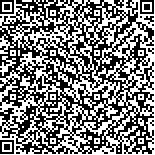鲁银山,张秀娟,郭铁成,等.成对关联刺激对脑梗死大鼠神经元自噬的影响[J].中华物理医学与康复杂志,2020,42(2):105-111
扫码阅读全文

|
| 成对关联刺激对脑梗死大鼠神经元自噬的影响 |
|
| |
| DOI:DOI:10.3760/cma.j.issn.0254-1424.2020.02.003 |
| 中文关键词: 脑梗死 成对关联刺激 神经元自噬 |
| 英文关键词: Cerebral infarction Paired associative stimulation Neuronal autophagy |
| 基金项目:国家自然科学基金面上项目(81272156) |
|
| 摘要点击次数: 5190 |
| 全文下载次数: 6174 |
| 中文摘要: |
| 目的 观察成对关联刺激(PAS)对脑梗死大鼠神经功能损伤恢复的影响,并从神经元自噬的角度探讨其作用机制。 方法 健康雄性Sprague-Dawley(SD)大鼠60只,随机选取20只纳入假手术组(n=20),另40只大鼠采用经典线栓法制作右侧大脑中动脉栓塞(MCAO)模型,并按随机数字表法分为模型组和治疗组(各20只)。治疗组自术后1 d起进行为期14 d的PAS治疗,模型组和假手术组不给予任何干预。分别于术后第1、7和14天,对各组大鼠进行改良神经功能缺损程度量表(mNSS)评分和提尾试验(EBST)评分;于术后第7天和第14天的治疗结束后行脑组织取材, 以Western blot法检测缺血半暗带区LC3Ⅰ、LC3Ⅱ、Beclin 1和Cathepsin B蛋白含量;免疫荧光双重染色法观察缺血半暗带区LC3与NeuN的共表达情况。 结果 ①术后第7天和第14天,模型组和治疗组的mNSS和EBST评分均高于假手术组(P<0.05),而治疗组mNSS和EBST评分均低于同时间点模型组(P<0.05),且治疗组术后第14天的mNSS评分低于术后第7天(P<0.05);②术后第7天和第14天,治疗组和模型组的LC3Ⅱ/Ⅰ比值均较假手术组高(P<0.01),且治疗组的LC3Ⅱ/Ⅰ比值较同时间点模型组低(P<0.05);模型组和治疗组的Beclin 1蛋白含量较假手术组高(P<0.01),而治疗组Beclin 1蛋白含量在术后第7天和14天均较同时间点模型组低(P=0.229,P<0.01);模型组 Cathepsin B含量较假手术组高(P<0.05),治疗组Cathepsin B含量亦较假手术组高(第7天时P<0.05,第14天时P=0.059);术后第14天治疗组的Cathepsin B含量较同时间点模型组低(P<0.01);③模型组和治疗组缺血半暗带区的LC3阳性细胞数均较同时间点假手术组显著增加(P<0.01),且治疗组较同时间点模型组减少(P<0.05);模型组和治疗组LC3阳性表达的神经元数量与神经元总数量的比值均较同时间点假手术组显著增加(P<0.01),且治疗组较同时间点模型组减少(P<0.05)。 结论 PAS治疗可抑制脑梗死大鼠缺血半暗带区神经元的自噬活性,促进大鼠脑梗死后神经功能损伤的恢复。 |
| 英文摘要: |
| Objective To investigate the effect of paired associative stimulation (PAS) on the recovery of neurological function after cerebral infarction, and to explore whether any such effect is associated with autophagy in the ischemic penumbra. Methods Sixty adult male Sprague-Dawley rats were randomly divided into a sham operation group (n=20) and an experimental group (n=40). The rats of the experimental group underwent 90 minutes of right middle cerebral artery occlusion (MCAO), while the sham group received a sham operation. The experimental group was subsequently divided into a model group (n=20) and a PAS group (n=20). The PAS group received 14 days of paired associative stimulation (PAS) beginning 24 hours after the operation. Neurological dysfunction was evaluated with a modified neurological severity scale (mNSS) and the elevated body swing test (EBST) on the 1st, 7th and 14th day after the MCAO. The rats were then euthanized and the expression of LC3Ⅰ, LC3Ⅱ, Beclin1, and Cathepsin B in the ischemic penumbra were detected using Western blotting, while the distribution of LC3 in neurons was detected using double immunofluorescent staining. Results Compared with the sham group, the average mNSS scores and EBST values of the model and PAS groups were both higher on the 7th and 14th day after the MCAO, with those of the PAS group significantly lower than those of the model group on those days. The average mNSS score on the 14th day was significantly lower than on the 7th day. Compared with the sham group, the average LC3Ⅱ/Ⅰ values, Beclin 1 and Cathepsin B levels of both the model group and the PAS group were significantly higher on the 7th and 14th day after the MCAO, with the LC3Ⅱ/Ⅰ values of the PAS group significantly lower than those of the model group at both time points. The PAS group also had significantly lower Beclin1 and Cathepsin B levels on day 14. On the 7th and 14th days after the MCAO, the average number of LC3-positive cells and the ratio of LC3-positive neurons to total neurons in the model and PAS groups were significantly greater than the those of sham group, with the PAS group′s values significantly lower than those of the model group at each time point. Conclusion PAS can significantly promote neurological recovery after stroke. The beneficial effects may involve inhibition of neuronal autophagy in the ischemic penumbra. |
|
查看全文
查看/发表评论 下载PDF阅读器 |
| 关闭 |
|
|
|